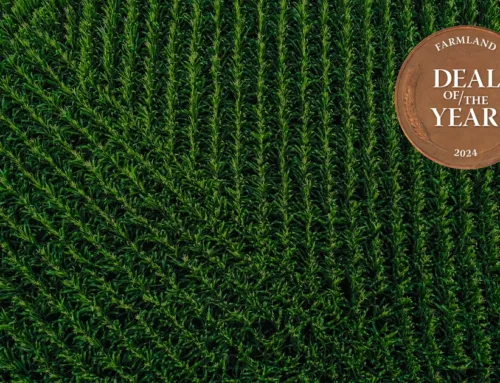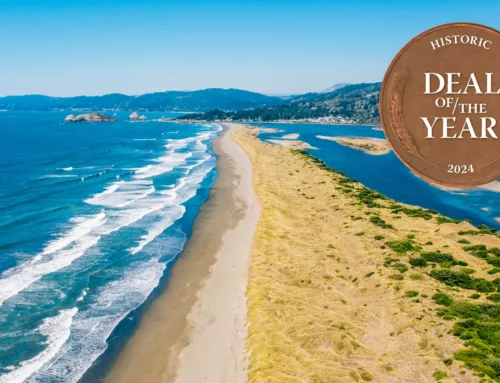Alaska: New Farming Frontier
Alaska: New Farming Frontier

LR_MikeDunleavy-02
Alaska Governor Mike Dunleavy joined Land Investment Expo 2023 live via teleconference to share why, he believes, the time is right for agriculture development in The Last Frontier.
“There’s tremendous opportunity in the State of Alaska, as far as I’m concerned,” Dunleavy said. Dispelling what he called a “myth that all we have in Alaska are ice and igloos,” Dunleavy told Land Expo attendees that temperatures in the summertime in the state’s interior usually fall between 60 and 70 degrees, though 80- and 90-degree days are not unheard of.
“Here, farmers raise all types of root crops, including potatoes. A lot of barley is grown, as well as oats. We have a large number of cattle as well as bison, elk and other livestock,” he said. “We also have a large and growing mariculture industry in the state of Alaska, offering the ability to grow seaweed, oysters, clams, and more.”
Alaskan Advantages
Laying out the merits of Alaska’s farming potential, Dunleavy pointed to the state’s abundant fresh water supply, its vast expanses of “clean” land tracts never exposed to chemical herbicides or pesticides, and — perhaps above all — its per-acre affordability.
“Our land is cheap, and we have lots of it,” Dunleavy said candidly. “We just sold some land in the Nenana area this past year for an average of about $500 per acre.”
That revelation seemed to perk ears up within the crowd.
“To me, that’s fascinating. Considering price points agriculturally across the country, I challenge you to name where you could find land at $500 per acre in the Lower 48 — and what it could produce at $500 an acre,” said Land Report editor Eric O’Keefe, who led the interview. O’Keefe was joined in Des Moines by Dave Muth, managing director of asset management for Peoples Company.
New Agricultural Opportunities
Between June and October 2022, Alaska held its first land auction in the Nenana-Totchaket Agricultural Project, a planned 140,000-acre agricultural development located just west of the town of Nenana, in the Alaskan interior. Land there will be auctioned in phases over the next three decades.
With its rich soil and easy access to water, Dunleavy shared with attendees, across a 30-minute call, that he believes the Nenana land is perfectly primed for development — thanks in part to its location “in a federally recognized opportunity zone, at the intersection of railroads and a major highway.”
During the 2022 Nenana land auction, roughly 2,000 acres were available, across 27 lots that ranged from around 20 acres to more than 300 acres. Despite reservations by some local residents, bidding for the land was robust, with 18 tracts receiving multiple bids — particularly those with larger acreages. In all, 24 of the 27 parcels, or 89 percent of the initial tracts, received bids. Seven of the properties received more than 10 bids each, according to reporting by The Frontiersman.
While the land had been identified as a prime agricultural region since the 1970s, its development has been possible only since the 2020 completion of a bridge over the Nenana River.
“The strong local and national interest with this auction confirms the conversations occurring for decades about the potential for farming in the Nenana region,” said Mia Kirk, Alaska’s acting division of agriculture director, in an announcement providing details of the initial auction.
At Land Expo 2023, Muth shared with the crowd several of his personal impressions from recent ag exploration trips to Alaska, while noting that the next auction of Nenana land is scheduled for 2024.
“It’s very clear that [acquiring land in Alaska] is going to function a little bit differently than a traditional farmland investment,” Muth said. “The folks that I think can be really attracted to what we’re talking about here are ones that want to pull capital from the land all the way into the supply chain in order to help develop some of the systems needed to ultimately grow this to a commercial-scale industry.”
Untapped Potential
During his conversation with O’Keefe and Muth, Dunleavy noted that the Nenana project is just one of “three to four major agricultural projects” currently underway in his state. He alluded also to the Delta Junction area, a large barley-growing region southeast of Fairbanks in operation since the 1980s, as another area of rich agricultural potential in the state.
“The state of Alaska owns millions of acres of potential farmland,” Dunleavy said, noting that Alaska’s lack of either a statewide income tax or sales tax makes investment there even more attractive for certain investors.
Further, given its geographic location, there’s potential to further develop Alaska’s agricultural supply chains with nearby Asian nations, including China, Japan, and South Korea, Dunleavy suggested.
“The Anchorage International Airport is the second-busiest cargo airport in the United States. A lot of traffic comes in and out of that airport,” Dunleavy said. “We also have well-established shipping lanes in the state of Alaska. So, in terms of the opportunities for farming, we’re just scratching the surface.”
Dunleavy also briefly addressed several upcoming infrastructure investments his office plans to launch in support of ag development, including further developing roadway and utility access to planned agricultural zones and investing in agricultural research and supply chain development.
“We want to build out our systems. We’re willing to have discussions with those that want to invest on a large scale here in the state of Alaska, including potentially even renting land over a long term at a very, very reduced price,” Dunleavy said. “There are challenges here, no doubt. But there is also lots of opportunity here.”






